Hydraulic Unit Scale
Hydraulic Unit Scale SHR Intro
- The goal of hydraulic-unit scale SHR is to improve the quality of existing habitat to maintain existing population sizes from further declines.
- Historically, spawning gravels were placed as smooth surface on sloped riffles or as a sequence of flat, smooth stepped pads. These were all unnatural and mindless of linked abiotic-biotic river functioning.
- More recently, common practices prior to the SHIRA framework involved placing gravel on riffles to yield spawning beds on the basis of subjective opinions. It is very common that local experts or local landowners will think they know best, but their ideas are not backed by scientific reasoning and careful inquiry.
- Some projects involve gravel bed contouring and inclusion of habitat heterogeneity features, such as boulders and large wood.
- We hypothesized at the outset that a process-oriented rehabilitation approach that balances fine-scale hydrogeomorphic dynamics with diverse yet high-quality habitat generation benefits would yield the best possible outcome. When we say "process-oriented", we mean that the approach re-establishes natural functioning of the river by driving hydraulic, geomorphic, and ecological outcomes through topographic steering of the flow. This steering is designed to work differently at each flow. it is this dynamic, controlled variation in topographic steering that constitutes a river "process", and this in turn drives a variety of natural functioning.
- Over time, we have learned how to control more and more processes to get rivers to behave more naturally. Nevertheless, we have a long way to go to fully understand the symphony of what a natural river can choreograph!
1. "Sustain the Wild Biota" Hypothesis
If we place gravel, boulders, and streamwood to create heterogeneous microhabitats to give individual organisms diversity in their habitat selection options, then we can restore local abiotic-biotic linkages that help to save existing populations. Such hydraulic unit features may not survive long if there are no geomorphic-unit and reach scale mechanisms for the river to rejuvenate them, but that does not mean we should never do activities at the hydraulic unit scale. Every scale is equally important to work on.
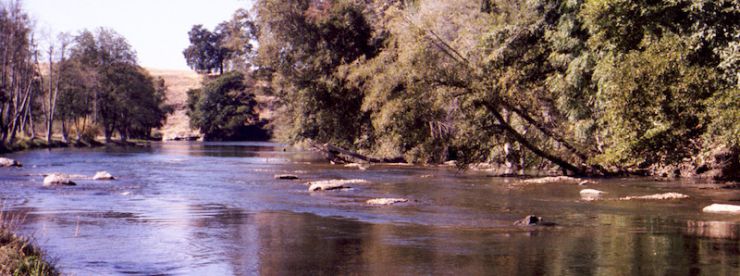
2. Conceptual Model For Hydraulic Unit Rehabilitation
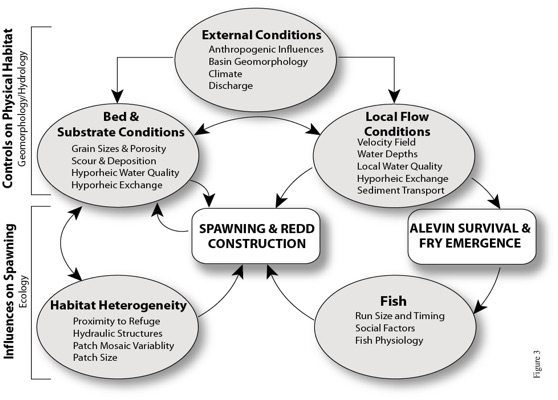
3. Importance of Habitat Heterogeneity
On the lower Mokelumne River, adding hydraulic-unit heterogeneity features to riffles that previously had none yielded an immediate ~ 95-100% utilization of the created features, demonstrating their value.
These results were published in Wheaton, J. M., Pasternack, G. B., and Merz, J. E. 2004. Use of habitat heterogeneity in salmonid spawning habitat rehabilitation design. in Fifth International Symposium on Ecohydraulics: Aquatic Habitats: Analysis and Restoration, IAHR-AIRH: Madrid, Spain. p. 791-796.
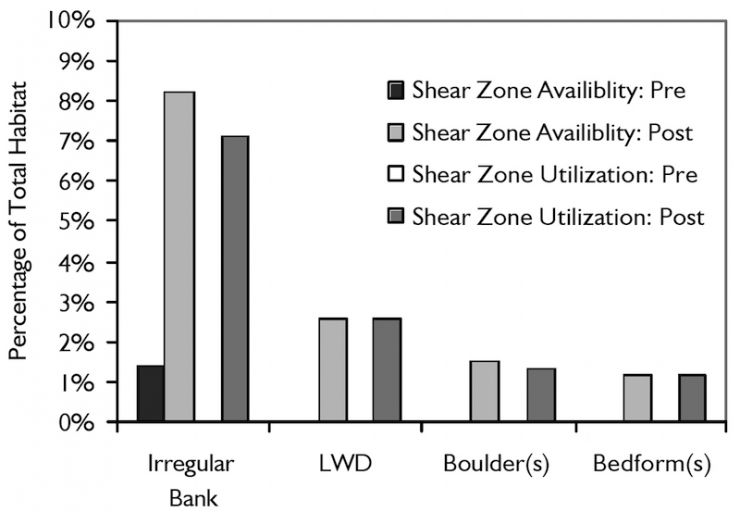
4. Where Should Gravel Be Added?
- SHR projects are often down without first considering the overall gravel deficit at the reach scale. This leads to a desire to get a quick benefit for a relatively low cost and effort. Also, there is concern that if a project is going to work or be sufficiently beneficial, then maybe not too much should be attempted. These considerations often lead to small pilot efforts of ~ 500 to 5000 tons to see what happens.
- When only such small amounts are used, the best benefit is going to come from topping off degraded riffles.
- Eventually it is going to be necessary to fill gravel mining pits or other excessively deep holes, as these are not natural pools- natural pools really are not that deep unless there is a specific forcing element driving that scour depth.
- In the long run, the best outcome is going to come from comprehensively overhauling the regulated river's slope, but there is no harm in starting with riffle enhancement.
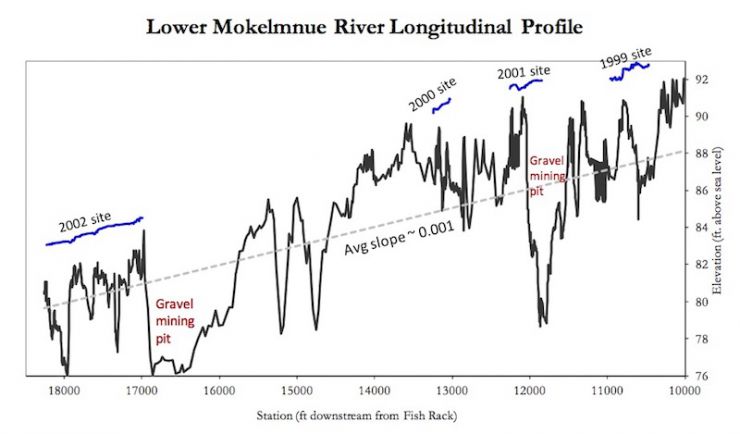
5. Hydraulic Unit Scale Conceptual Challenges
Q: Significant improvements in spawning habitat quality have been demonstrated on the Mokelumne River and elsewhere, but why bother with "one needle in a haystack" when system change is needed to yield a significant increase in fish population sizes? Aren't you just moving fish from one riffle to another anyway, with no real net gain in habitat or population size?
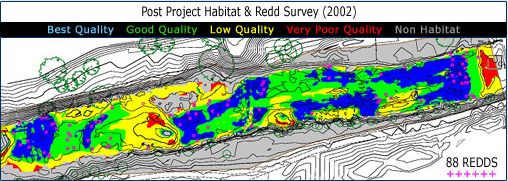
Another important thing to remember is that it took decades for rivers to become degraded, so one should not expect them to get fixed overnight in one project. It's like building a house- you don't lay the concrete foundation and then get upset that there is no king-size bed or microwave oven yet. Take the first step forward and keep your head down to get to the final goal. This sounds cliche, but it remains the truth. It is less important where you begin the journey than that you see it through and don't keep switching paths time and again. Adaptive management is good, but can get out of hand if you never get any where. This is all to common.
Get going with hydraulic unit SRH and over time you will gian experience, wisdom, and the capability to scale up to geomorphic unit and reach scales. If you let the naysayers have their way, you won't accomplish anything- and sometimes that is exactly what they want!
